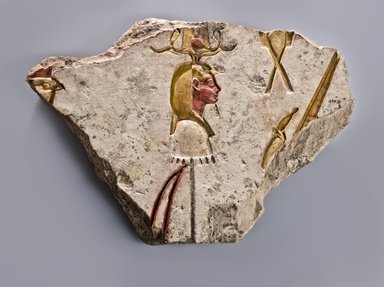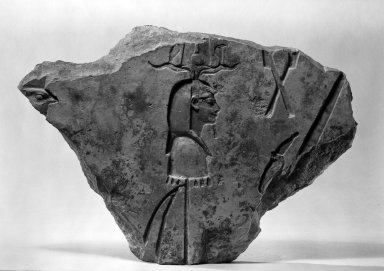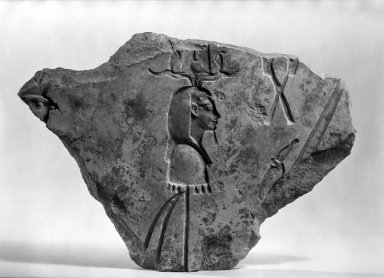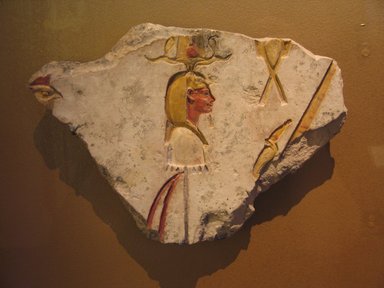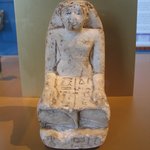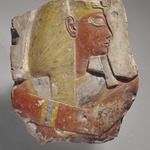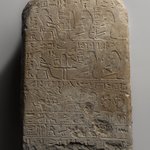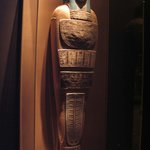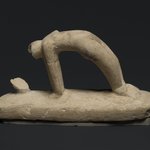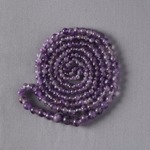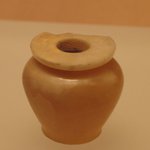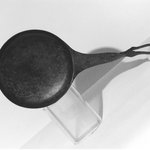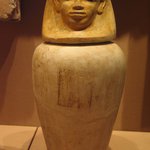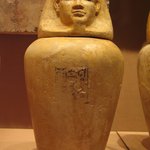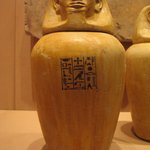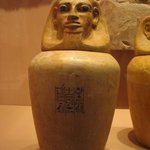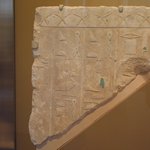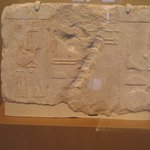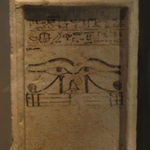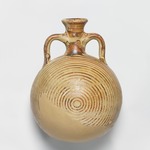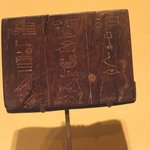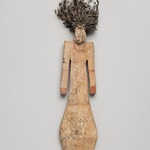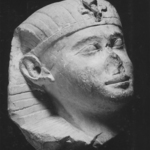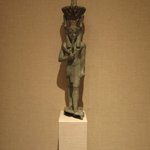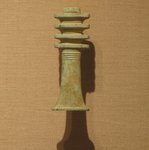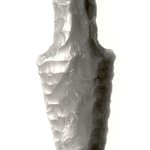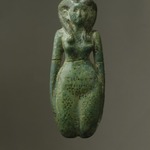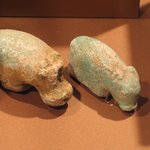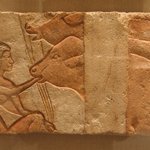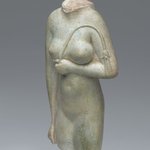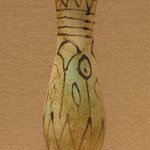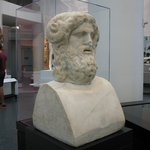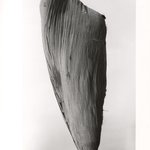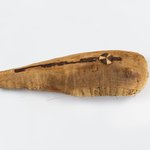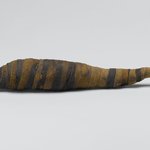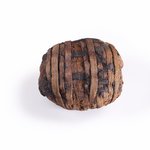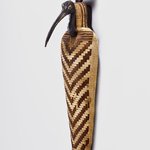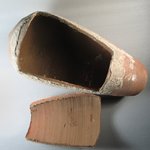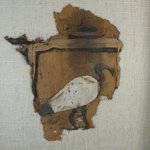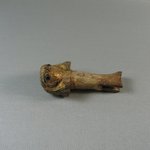Relief of the Royal Ka
Egyptian, Classical, Ancient Near Eastern Art
On View: Old Kingdom to 18th Dynasty, Egyptian Galleries, 3rd Floor
According to Egyptian belief, the Royal Ka (soul) inhabited the legitimate king and migrated from the old to the new when the older king died. Some scholars have associated votive animal mummies with a ritual that strengthened the Royal Ka.
Here, an artist portrayed the Ka as a royal bust on a standard wearing a crown of ostrich feathers, cobras, and the short ram’s horns associated with Amun, king of the gods. The figure also wears a protective cobra on his forehead.
MEDIUM
Limestone, pigment
DATES
381–343 B.C.E. or 186–145 B.C.E.
DYNASTY
Dynasty 30 or reign of Ptolemy VI
PERIOD
Late Period or Ptolemaic Period
DIMENSIONS
9 13/16 x 14 x 1 3/4 in. (25 x 35.5 x 4.5 cm)
(show scale)
ACCESSION NUMBER
67.69.2
CREDIT LINE
Charles Edwin Wilbour Fund
CATALOGUE DESCRIPTION
Fragmentary limestone slab with sunk relief representation of a king's bust, wearing an anedjty crown, on a standard pole with streamers; bearded. On the right sa sign and fillet bandelet ending in uraeus with white crown. On the left head of Horus hawk with part of red crown, probably originally mounting a serekh and the royal ka. Much color left: crown, yellow and red, the same as royal bust. Traces of color in other parts of the relief.
Condition: Lower edge probably ancient; all other sides fragmentary. Piece much discolored and somewhat chipped.
CAPTION
Relief of the Royal Ka, 381–343 B.C.E. or 186–145 B.C.E. Limestone, pigment, 9 13/16 x 14 x 1 3/4 in. (25 x 35.5 x 4.5 cm). Brooklyn Museum, Charles Edwin Wilbour Fund, 67.69.2. Creative Commons-BY (Photo: Brooklyn Museum (Gavin Ashworth,er), 67.69.2_Gavin_Ashworth_photograph.jpg)
IMAGE
overall, 67.69.2_Gavin_Ashworth_photograph.jpg. Brooklyn Museum photograph (Gavin Ashworth, photographer), 2012
"CUR" at the beginning of an image file name means that the image was created by a curatorial staff member. These study images may be digital point-and-shoot photographs, when we don\'t yet have high-quality studio photography, or they may be scans of older negatives, slides, or photographic prints, providing historical documentation of the object.
RIGHTS STATEMENT
Creative Commons-BY
You may download and use Brooklyn Museum images of this three-dimensional work in accordance with a
Creative Commons license. Fair use, as understood under the United States Copyright Act, may also apply.
Please include caption information from this page and credit the Brooklyn Museum. If you need a high resolution file, please fill out our online
application form (charges apply).
For further information about copyright, we recommend resources at the
United States Library of Congress,
Cornell University,
Copyright and Cultural Institutions: Guidelines for U.S. Libraries, Archives, and Museums, and
Copyright Watch.
For more information about the Museum's rights project, including how rights types are assigned, please see our
blog posts on copyright.
If you have any information regarding this work and rights to it, please contact
copyright@brooklynmuseum.org.
RECORD COMPLETENESS
Not every record you will find here is complete. More information is available for some works than for others, and some entries have been updated more recently. Records are frequently reviewed and revised, and
we welcome any additional information you might have.
